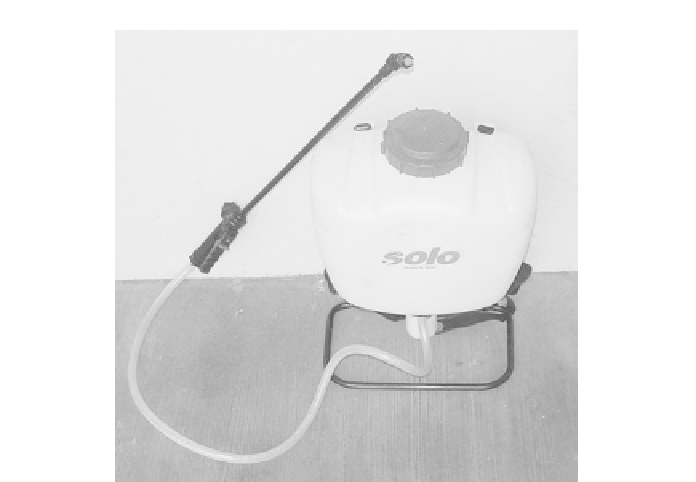Environmental Engineering Reference
In-Depth Information
Fig. 11.5. Hand sprayers are used on small or hard-to-reach areas and usually have
only one nozzle.
(i) a hopper to hold the pesticide; (ii) a mechanical agitator at the base of
the hopper to provide a uniform and continuous feed; and (iii) some type
of metering device, usually a slit gate, to regulate the flow of granules.
Drop spreaders, also called gravity spreaders, apply coarse, uni-
formly sized dry particles to soil and sometimes foliage. An adjustable
sliding gate opens the outlet holes, and the granules flow out by gravity
feed. A revolving agitator is activated when the spreader is in motion to
ensure uniform dispensing. Drop spreaders are light and relatively sim-
ple and are generally more precise and deliver a better pattern than
rotary spreaders. Because the granules drop straight down, chemical
drift is minimal, control is good and the chance of applying pesticide to
non-target areas is small. Because the edge of a drop-spreader pattern is
sharp, any steering error will cause skips or overlaps. Application in
crossing directions usually helps to achieve better coverage, but com-
pletely uniform application is difficult to achieve with a drop spreader.
Rotary spreaders, both power- and hand-driven, distribute granules
to the front and sides of the spreader by means of a spinning disc or fan.
Most rotary spreaders produce a belt width of 2-3 m, so they cover an
area faster than drop spreaders. The rotary spreaders are usually easier to
push than drop spreaders but are less precise in uniformity and distri-
bution. In addition they are more sensitive to ground speed, physical
characteristics of the granules and environmental factors such as wind.

